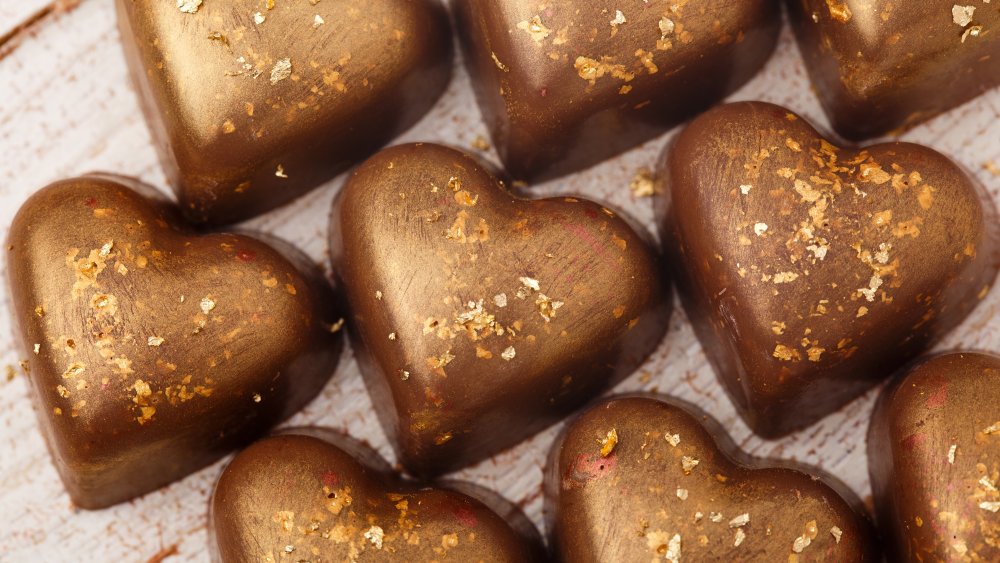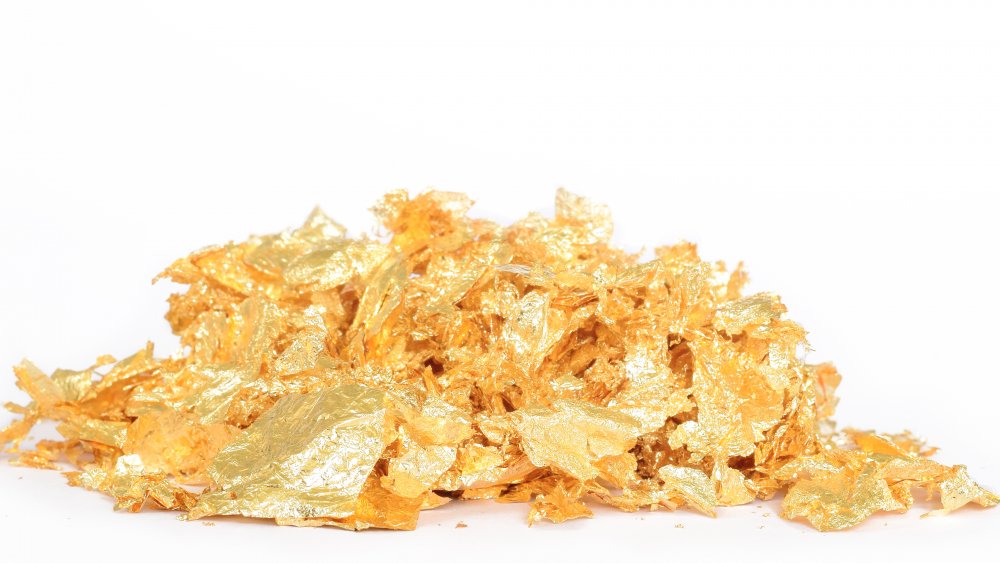What You Should Know Before Eating Edible Gold
From 23-karat gold-dusted chocolate bacon to The Thousand-Dollar Bagel to the Serendipity 3 Frrrozen Haute Chocolate, which clocks in at a cool $25,000 (via FinancesOnline), edible gold in any form seems capable of taking the most basic of foods and turning them into works of art. The ingredient has even made its way onto pizza, like the $2,000 pie at New York City's Industry Kitchen, topped with, among other things, foie gras, black truffle, caviar, rose petals, and strips of gold, according to The Daily Meal.
On a stricter budget? Haul yourself to Charlotte, North Carolina, for the $500 Golden Surf and Turf pie at Firenza Pizza, which features lobster, caviar, and a dusting of edible gold leaf (via The Charlotte Observer). True, these gold-flecked creations may be nothing more than shrewd attempts at free publicity by their makers. After all, in a world where the most headline-grabbing foods must be eminently Instagrammable and a little bit outrageous, edible gold can provide the icing on the cake, literally and figuratively — even if it contributes nothing to overall taste (via Maclean's). In fact, it's literally tasteless.
But the luxury ingredient also raises some important questions: Is it real gold? How is it made? And is it actually safe to eat?
Edible gold's manufacturing and safety
One manufacturer, Cornucaupia, details the complex making of its edible gold leaf. Here's the CliffsNotes version: The raw metal is melted in an oven, poured into a bar-shaped mold, and cooled. Any imperfections in the bar are hammered out to create a uniform thickness, then rolled into a thinner bar. That is then heated, cut, beaten, and hammered some more to make the final paper-thin sheets. If you consider edible gold an over-the-top indulgence and ostentatious show of wealth, you're spot-on — and it turns out that has been its main selling point for centuries.
According to CNBC, gold leaf producer Manetti points to studies that found the ingredient dating back to "ancient times," with uses in Europe cropping up in the Middle Ages. Obviously, these applications were designed to signal extravagance that only society's top classes could afford. The Takeout notes that edible gold must be 23 or 24 karats, but the U.S. FDA hasn't issued specific guidelines for edible gold, which is considered "atypical." The European Union has more stringent rules, but, according to Academy of Nutrition and Dietetics spokesperson Whitney Linsenmeyer, "Gold is biologically inert and therefore doesn't break down during normal digestive processes. Any gold consumed will likely be excreted from the body as waste."
Therefore, though safe, eating edible gold has zero "nutritional or health benefits," nutrition expert Deborah Orlick Levy confirms to CNBC. So indulge if you must, but you'll definitely be shelling out for style, not substance.

